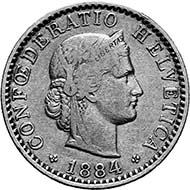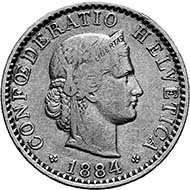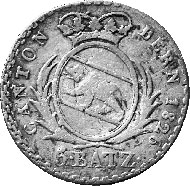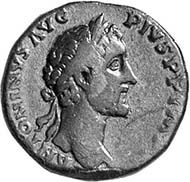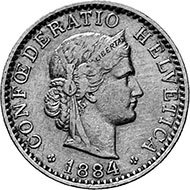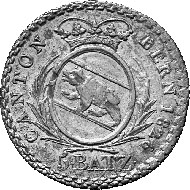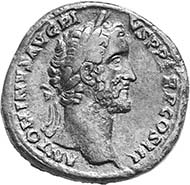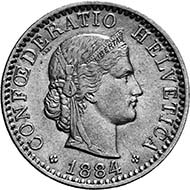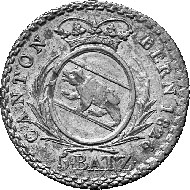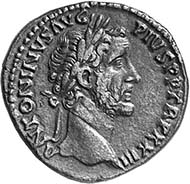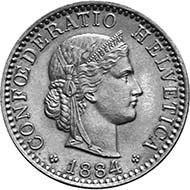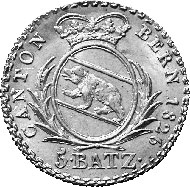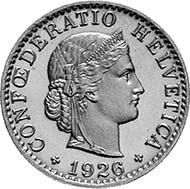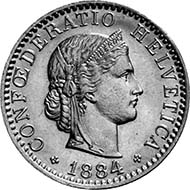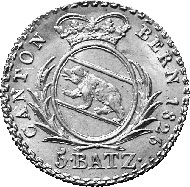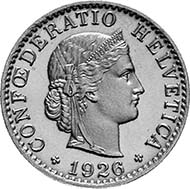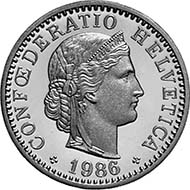Coin Grading Made Easy
by courtesy of Barbara Balz / World Money Fair
and of Verband Schweizerischer Berufsnumismatiker
A high art
A lot of coin collectors are insecure when it comes to judging the condition of a coin. Is the piece “fine” or “very fine”, “almost very fine” or even “very to extremely fine”? When opening an auction catalogue written in German one gets the impression that there are virtually unlimited variations of coin descriptions. That is due to the fact that, although the description follows a series of well-defined criteria, several other factors influence the final grade of a coin – especially in the case of coins minted by hand and, in particular, using different dies. What does the surface of the coin look like, for instance? Does it have a nice patina? Are the details sharp and is the coin perfectly centered? Or are some features of the image not clearly defined or worn-out? Is the metal corroded? Theoretically, all these details ought to be thoroughly described, but mostly they are only reflected in the fact that the author of the catalogue upgrades or downgrades the actual coin condition, accordingly a “very fine” becomes a “good very fine” or an “almost very fine”.
Each collector decides what is important to him
Coin grading as it is usually done in Europe leaves much space for the individual collector and his personal priorities. And it gives him the responsibility of defining what he likes and what he doesn’t like about a coin. Some collector prefers a “very fine” piece with a beautiful patina. Somebody else would never buy a corroded coin, even though the specimen may be graded “extremely fine”. Other collectors dislike double strikes or faulty planchets, while for still others style is all that matters, which makes them prefer a “very fine” coin of excellent style to an “extremely fine” one with a faulty die impression.
Basic knowledge
However, one should be familiar with the criteria that define coin grades in order to be able to decide, in a second step, whether a piece fits in well in one’s collection or not.
To this purpose, the Swiss Association of Professional Numismatists has created an overview of coin grades. The 20-Rappen-piece represents coins that were minted with standardized, technically reproduced and identical dies, as in use since the 19th and 20th century. The Bernese 5-Batzen-piece represents modern, the sestertius of Antoninus Pius ancient coins.
Fine (F)
Not all of the original detail is visible. Legends are still legible and the overall design is clearly recognizable. Heavy wear.
Very Fine (VF)
All original detail is visible. Moderate wear on the entire coin. The coin may have small damage on the relief.
Extremely Fine (EF)
Coins in this category have been in circulation only for a short period of time. The relief should show no traces of wear. The fields may contain tiny scratches or marks. The coin should not show any traces of damage.
Uncirculated (UNC)
This category applies to coins that have not been in circulation. Only the slightest marks due to mass production in the mint are visible. Surface may be spotted or lack some luster.
Brilliant Uncirculated (BU)
High quality production for collectors with specially treated dies and polished planchets. Optimal contrast between mirror-like surface and matte relief. Individually minted and generally packed in boxes or special containers. Production of the Modern Age.
This grade applies also to newly minted coins that were never circulated. However, they mustn’t present any traces of mass handling.
First strike, Specimen or Proof-like
Formerly, the first strikes of a new die were often made for public or royal coin cabinets and special collectors. The brilliant surface is similar to that of proof coins. Due to the high quality of the dies used today, there is practically no difference to “brilliant uncirculated” coins.
Proof (PF)
Coins in qualities less than fine are generally not considered worth collecting. The classification used for them are „very good“ „good“ and „poor“.
With a special thanks to the Verband Schweizerischer Berufsnumismatiker who has provided pictures and the descriptions of grades.




